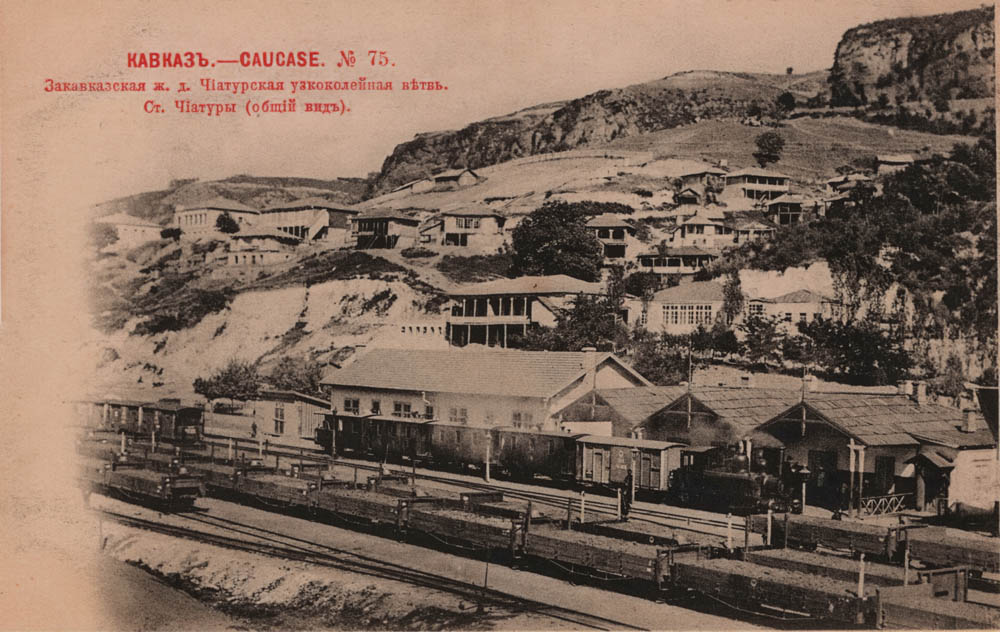The construction of the Transcaucasian Railway began in 1865 with a segment of the Poti-Tiflis Railway. At that time, rails were produced by two factories—the Putilov Plant in St. Petersburg and the Yuzovka Plant near Donetsk. They were transported by steamships from Novorossiysk and Rostov, and then further by rail to the laying site. Only local oak was used for the production of sleepers.
With the development of the Baku oil fields, the need for railway transportation of oil to ports became apparent, and in 1883, new sections were opened: Samtredia–Batumi and Tiflis–Baku. By 1899, the railway had extended to the city of Alexandropol, located in what is now Armenia, and by 1908, it reached the city of Julfa, on the border with Persia.
The Chiatura railway station was built on the Zestafoni–Sachkhere branch of the Transcaucasian Railway. The station appeared here in 1895 with the purpose of transporting manganese ore to the manganese processing plants in Zestafoni, as well as for export supplies. The largest importers of Chiatura ore before World War I were Germany (43% of exports), Great Britain (23%), and Belgium (14%).
